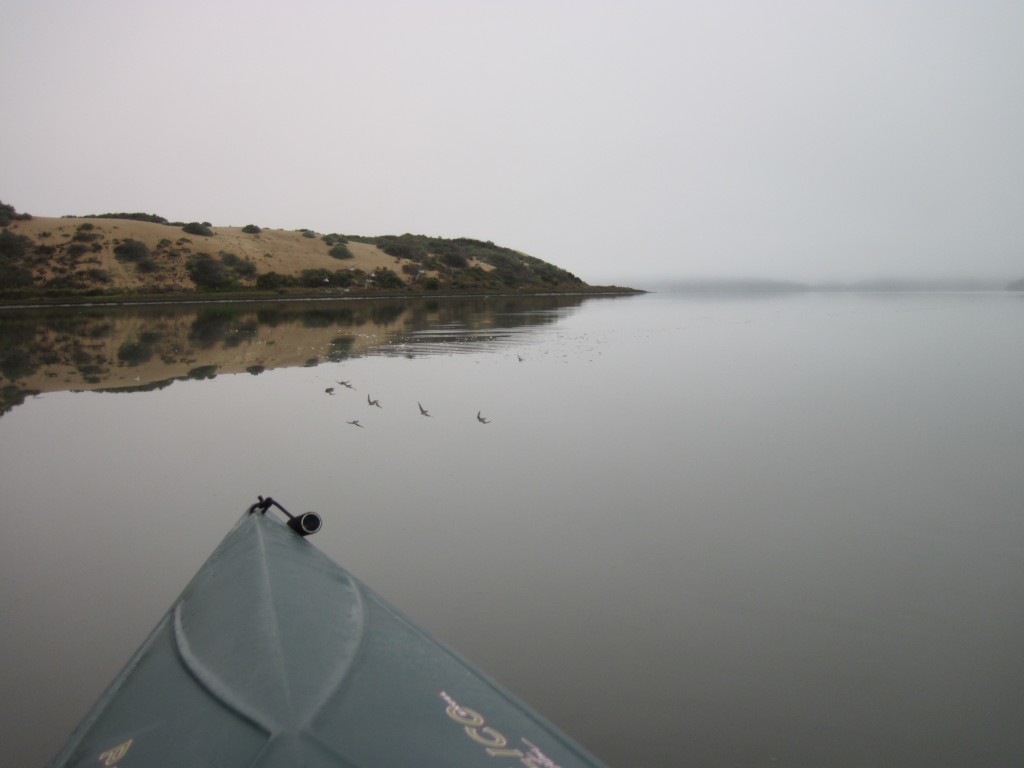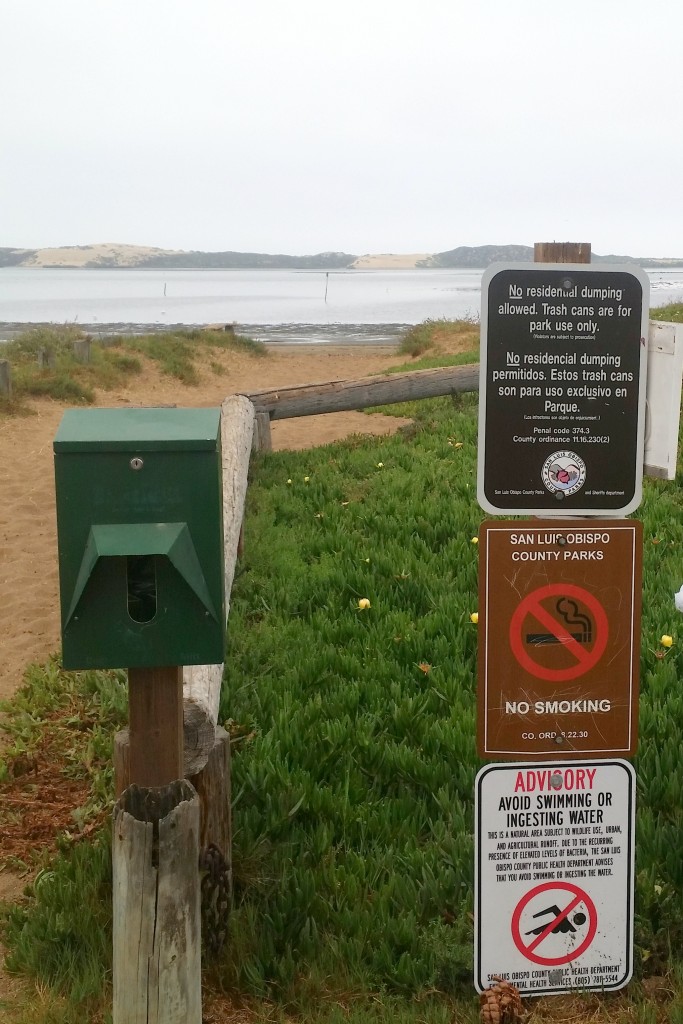Fulfilling our mission to protect and restore the Morro Bay estuary for people and animals requires a lot of hard work in the field. Read on to see what our staff and volunteers have been up to during the month of August.
Monitoring Staff Updates
August was a quiet month for field work. Our monitoring staff spent time entering data and planning for upcoming eelgrass monitoring projects, but still got out into the field a few times.
Our Field Technician, Evan, put on his snorkel gear and helped CalPoly professor Jenn Yost collect more eelgrass samples for genetic analysis.
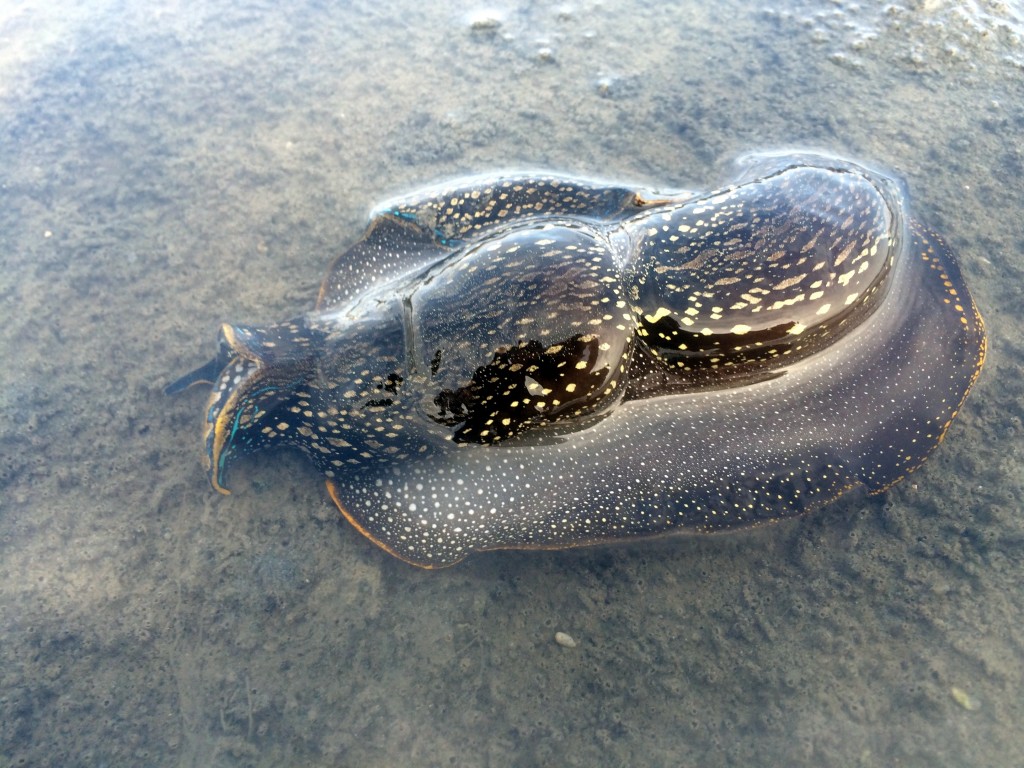
We collected water samples in the back bay.
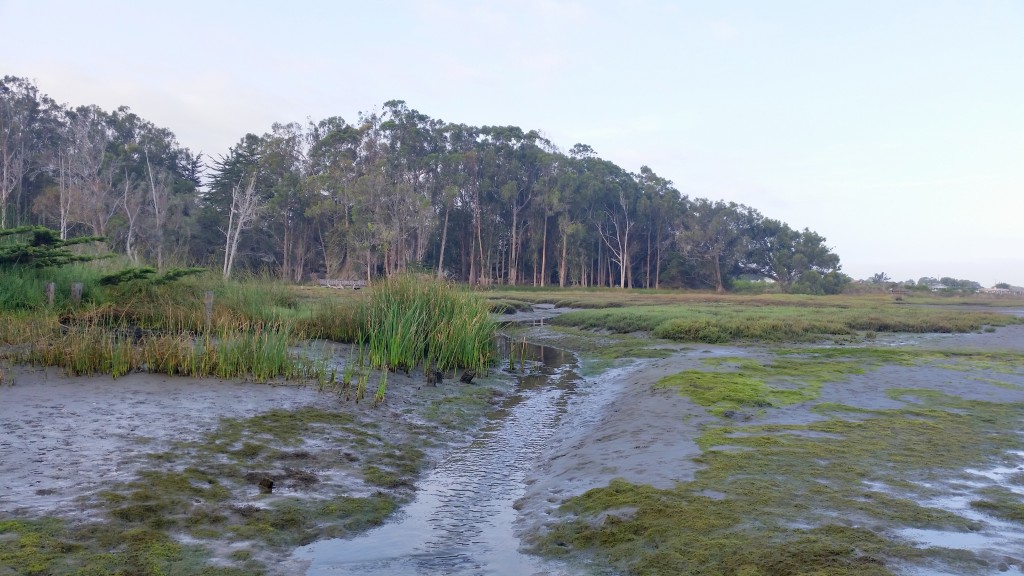
Karissa and Shane installed a pressure transducer station to measure creek water depth for an upcoming fish passage project. Stay tuned for a blog post on pressure transducers and how we use them in the next few months.
Volunteer Updates
We have been monitoring early morning dissolved oxygen levels in the bay since 2002. We have seven sites throughout the bay that volunteers monitor on a monthly basis. These volunteers head out on kayaks in the early morning (within two hours of sunrise) and take surface measurements of temperature, salinity and dissolved oxygen. Data from this effort is available in our Data Summary Report.
This month we had our back bay team head out with a camera.
These volunteers monitor three sites – Cuesta Inlet, Cuesta Channel and Sharks Inlet.
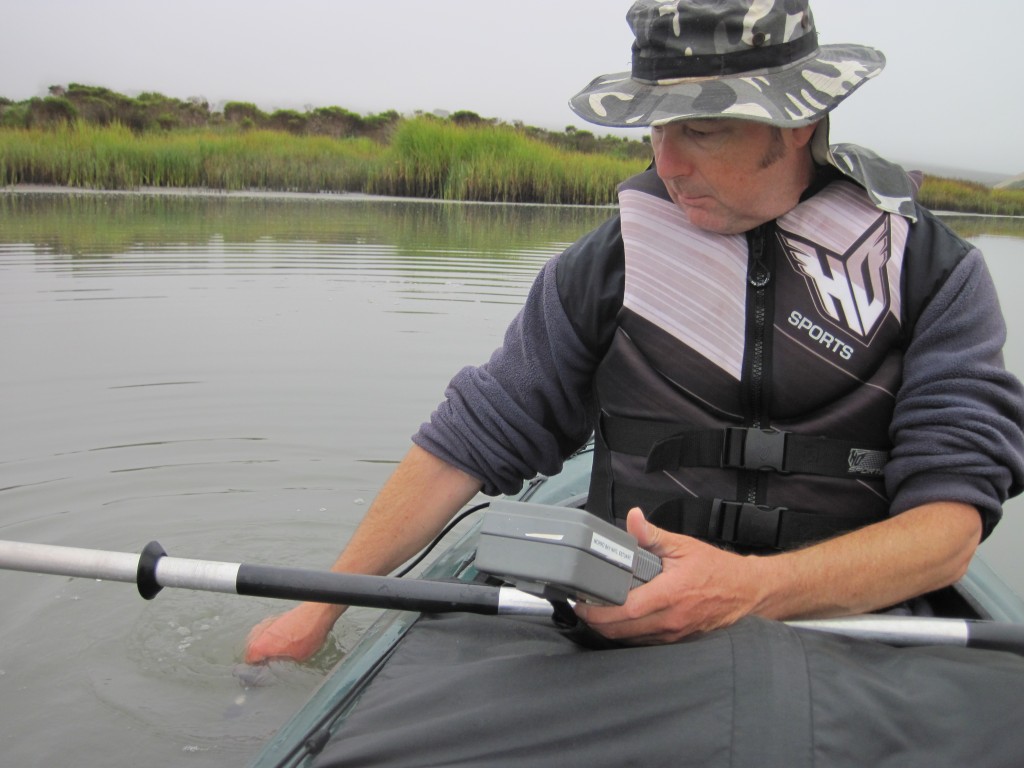
Some of you might have noticed a new sign up at Pasadena Point. SLO County has replaced a sign at Pasadena Point, letting people know that site occasionally has unsafe swimming conditions. This is one of the sites monitored monthly by Estuary Program volunteers. Regardless of whether a sign is posted, it is always a good idea to wash your hands after recreating in natural waters and to stay out of the water for 72 hours following a storm, as Surfrider recommends.
The sign on the bottom right is the newly replaced bacteria sign at Pasadena Point.
Did you enjoy these field updates?
